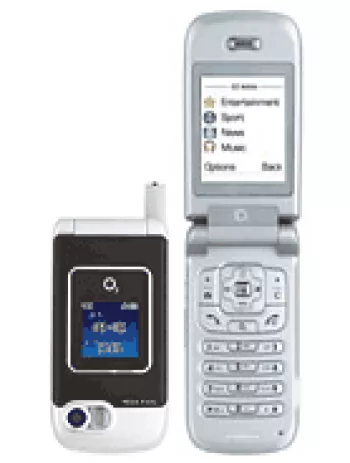
Network
The O2 XDA Graphite supports GSM and UMTS technology, allowing it to operate on a range of frequency bands: GSM 900, 1800, and 1900 MHz for 2G, and UMTS 2100 for 3G connectivity. This setup enables users to experience better call quality and wider coverage area. The device offers data transmission speeds up to 384 kbps, which was adequate for browsing and accessing online services at the time of its release.
Launch and Status
Announced in December 2006, the O2 XDA Graphite captured market attention with its integration of advanced features for the era. However, like many early smartphones, its lifecycle was limited, and it has been discontinued. Despite its short tenure in the market, the device played a significant role in showcasing the potential of smartphone technology alongside personal digital assistants.
Design and Build
The device boasts a compact form factor with dimensions of 109.5 x 46.9 x 18 mm and weighs approximately 105 grams, making it relatively lightweight and portable. It uses a Mini-SIM card and features a practical design that balances functionality and aesthetics. The layout caters to ease of use, with keys and interfaces that are intuitive for its target user base.
Display
Featuring a 2.2-inch TFT display with a resolution of 240 x 320 pixels, the O2 XDA Graphite offers a modest visual experience. The screen supports 65K colors, delivering satisfactory brightness and color clarity for basic tasks. While today's standards demand higher quality displays, this was considered functional for handling the smartphone’s essential applications.
Platform and Performance
The device is powered by the Microsoft Windows Mobile 5.0 Smartphone operating system, making it part of the early wave of devices that introduced users to mobile versions of Windows OS. An Intel XScale PXA 270 processor clocked at 416 MHz provides the necessary power for running its applications. Although limited by today's standards, it offered acceptable performance for the productivity tasks common at the time.
Memory and Storage
Equipped with 64 MB of RAM and 128 MB of ROM, the XDA Graphite allows for the essential storage of apps and data. However, users could extend storage via a dedicated microSD slot, a feature that added versatility to the device for users requiring additional space for multimedia and applications.
Cameras
The main camera on the XDA Graphite is a single 2 MP shooter with LED flash, enabling basic photography needs. For video calls, the front camera offers VGA quality. While far from the high-definition capabilities of modern phones, these components were adequate for simple photography and video communication during its time.
Sound and Communication
The device includes a loudspeaker with stereo output, supporting a range of alert types including polyphonic and MP3 ringtones. Notably lacking a 3.5 mm headphone jack, audio connectivity is somewhat limited. Communication features include Wi-Fi 802.11b/g, Bluetooth 1.2, and miniUSB for charging and data transfer, although the device does not support GPS or FM radio features.
Battery Life
The O2 XDA Graphite houses a removable Li-Ion 1100 mAh battery, offering up to 200 hours of standby time and 4 hours of talk time. These specifications allowed for moderate usage throughout the day without frequent recharging—a crucial feature for users who relied on their devices for business and communication purposes.
Miscellaneous and Pricing
At launch, the O2 XDA Graphite was priced at approximately 290 EUR, positioning it as a mid-range device in the competitive smartphone market of the era. While it lacks certain modern conveniences, it delivered a strong combination of productivity, functionality, and connectivity for users looking to move beyond the basic mobile phones available at the time. Although discontinued, it remains a notable example of early smartphone innovation.
Main Features of O2 XDA Graphite
- Supports both GSM and UMTS technology for better connectivity.
- Compact and lightweight design at 109.5 x 46.9 x 18 mm and 105 g.
- 2.2-inch TFT display with 240 x 320 pixels resolution for clear visuals.
- Powered by Microsoft Windows Mobile 5.0 Smartphone OS and Intel XScale PXA 270 416 MHz CPU.
- Expandable storage with a dedicated microSD card slot.
- 2 MP main camera with LED flash for basic photography needs.
- Equipped with Wi-Fi 802.11b/g for wireless internet connectivity.
- Bluetooth 1.2 for wireless file transfers.
- Removable 1100 mAh Li-Ion battery providing up to 200 hours of standby and 4 hours of talk time.
Drawbacks of O2 XDA Graphite
- Lacks 3.5mm headphone jack
- Discontinued and may not receive updates or support
- Low internal memory with only 64MB RAM and 128MB ROM
- Outdated operating system: Microsoft Windows Mobile 5.0 Smartphone
- Basic VGA selfie camera with limited video capabilities
- No positioning or GPS functionality
- No FM Radio option
- Limited screen size of 2.2 inches with a low screen-to-body ratio
- Low resolution display with only 65K colors
- Older Bluetooth version 1.2

View Also
More Phones
All Rights Reserved +13665 Phones © Mobilawy 2025
























